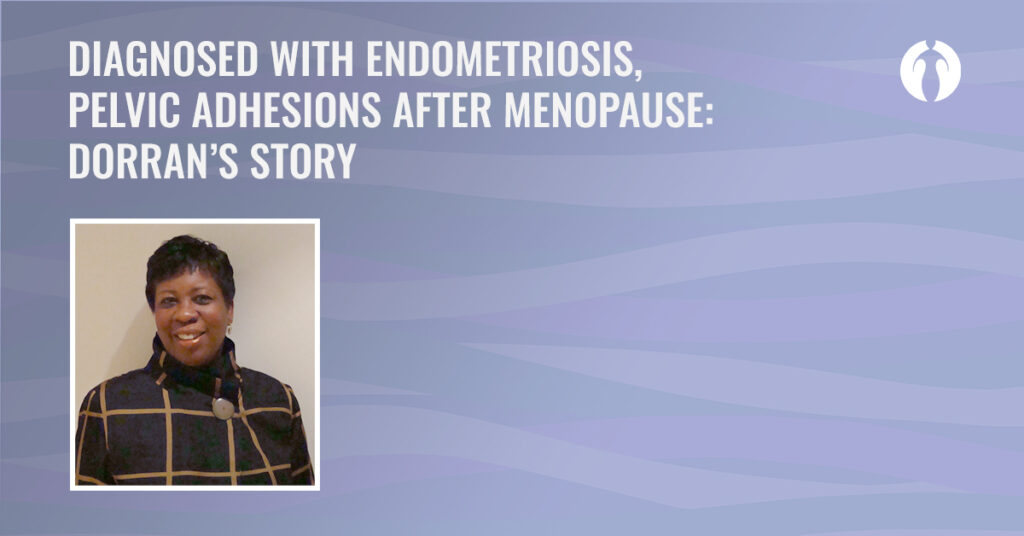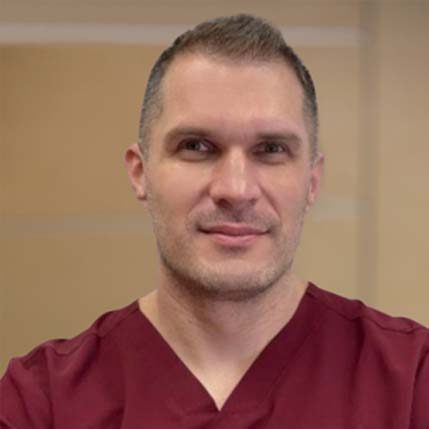PELVIC ADHESION
By Natalya Danilyants, MD - Laparoscopic GYN Surgeon and Co-Founder of CIGC
Pelvic Adhesion Resection Specialists at CIGC
Pelvic adhesions caused from scar tissue in the pelvis can cause pain, gastrointestinal problems and infertility. Surgical resection of these adhesions can help you find relief from severe symptoms like these. At CIGC, our pelvic adhesion resection specialists are experts in removing pelvic adhesions through minimally invasive surgery.
At CIGC, we put you first. Every patient in our care is treated with respect and special attention is paid to the patient experience. Pelvic adhesion specialists look at every case individually to present you with the best treatment option. We want you to have the utmost confidence in the level of care you receive.
Many physicians may present open surgery as your only option in dealing with pelvic adhesions. But when you choose to have your procedure at CIGC, our specialists can give you a less invasive surgery, a faster recovery and virtually invisible scarring.
What Is Resection of Pelvic Adhesions?
Pelvic adhesions form when scar tissue creates bands between pelvic organs. They can develop from increased inflammation due to complex GYN conditions, like endometriosis or infection, or from previous surgical procedures, including cesarean sections. These adhesions can create a condition called “frozen pelvis,” which occurs when the internal organs become stuck together.
Scar tissue can be completely asymptomatic and not cause any problems. However, when scar tissue causes infertility, pain or gastrointestinal problems such as bloating or constipation, then surgical resection is recommended.
Resecting or removing pelvic adhesions requires advanced GYN surgical expertise. CIGC surgical specialists use advanced minimally invasive GYN techniques to resect pelvic adhesions in a way that lowers the risk of complications both during and after surgery.
Pelvic Adhesion Treatment Options
Pelvic adhesions need to be treated surgically, as nonsurgical methods are not effective in removing physical adhesions. Commonly recommended nonsurgical remedies may include medication, exercise, physical therapy and lifestyle changes, but it’s important to recognize these methods may only have an effect on symptoms associated with adhesions — and that effect will likely be minimal. None of these alternative treatments will cure pelvic adhesions.
Speak with an expert about the best option for your particular case.
Why CIGC?
A Gynecological Surgery Center of Distinction
CIGC is recognized as a Center of Excellence in Minimally Invasive Surgery by the American Association of Gynecologic Laparoscopists (AAGL).
Advanced Techniques
The CIGC-exclusive DualPortGYN® procedure is a minimally invasive technique for resection of pelvic adhesions. This advanced technique allows for fewer and smaller incisions than the typical GYN surgical techniques, meaning scars are minimized and recovery is faster.
In every surgery, our specialists put your experience as a patient first. They care for you as an individual through a detailed and personalized approach. Our innovative procedures have low complication rates both during and after surgery, and our patients typically recover in one to two weeks on average.
| DualPortGYN Procedure | Standard Laparoscopic | Robotic | Open | |
|---|---|---|---|---|
| Length of Procedure | 30 min–1 Hour1 | 2–3 Hours2,3,4 | 2–3 Hours2,3,9 | 1–2 Hours3,9 |
| Number of Incisions | 2 (5 mm)1 | 4 (5 mm)5 | 3–7 (8–12 mm)1,10 | 1 Large (10–15 cm)12,13 |
| Hospital Stay | 0 Days1 | 0–1 Day1,6,7 | 1–2 Days7,11 | 3 Days3,7 |
| Recovery Time | About 1 Week1 | Up to 3 Weeks8 | Up to 6 Weeks1 | Up to 8 Weeks8,14 |
Success Stories
Hear from patients who have had positive experiences with CIGC’s innovative procedures:
“The incisions from the surgery are practically invisible. The last surgery I had was just 2 small incisions and she can use the same access points so I never have new scars.” –Lauren
Hear More from Lauren
“I had surgery with Dr. MacKoul to remove the dermoid cyst, and it was discovered during that surgery that I had endometriosis and bowel adhesions. They cleaned me all up.” –Brittany
Hear More from Brittany
“It’s only been a month, and I feel amazing. I can tell already that the pain I was having is gone. I understand that there are doctors who are trained to remove fibroids, but they aren’t experts like Dr. Danilyants. When I read up about the CIGC specialists, I felt really good about my decision. I’m ready to get my life back, and I feel like I’m headed in that direction.” –Tiffany
Hear More from Tiffany
Our Doctors
Our pelvic adhesion resection specialists are known for their innovative and minimally invasive gynecological surgery techniques. They are experts in diagnosing and managing complex GYN conditions that cause pelvic adhesions, like endometriosis, giving their patients the relief they deserve.
Our Centers
Resection of pelvic adhesions is performed at select freestanding surgery centers that are not attached to hospitals. All procedures are outpatient, so patients go home that day. With convenient locations near major cities like Washington, D.C., and New York City, each center is fully set up with state-of-the-art equipment and staffed with friendly, compassionate employees who are committed to giving you the best experience possible.
We follow CDC guidelines to ensure the enhanced cleanliness and safety of each center. During the ongoing COVID-19 pandemic, we are offering telemedicine consultations in addition to in-person appointments to discuss all treatment options available to you.
Related Posts


References
1Danilyants N, MacKoul P, Baxi R, van der Does LQ, Haworth LR. Value-based assessment of hysterectomy approaches. JOGR. 2018.
2Pasic et al. Comparing Robot-Assisted with Conventional Laparoscopic Hysterectomy: Impact on Cost and Clinical Outcomes. JMIG. 2010 17 (6): 730-738
3Landeen LB, Bell MC, Hubert HB, Bennis LY, Knutsen-Larson SS, Seshadri-Kreaden U. Clinical and cost comparisons for hysterectomy via abdominal, standard laparoscopic, vaginal and robot-assisted approaches. South Dakota Medicine 2011; 64(6): 197-199
4Drahonovsky J., Haakova L., Otcenasek M., Krofta L., Kucera E., and Feyereisl J.: A prospective randomized comparison of vaginal hysterectomy, laparoscopically assisted vaginal hysterectomy, and total laparoscopic hysterectomy in women with benign uterine disease. EJOGRB 2010; 148: pp. 172-176
5Einarsson, J. I., & Suzuki, Y. (2009). Total laparoscopic hysterectomy: 10 steps toward a successful procedure. Reviews in obstetrics & gynecology, 2(1), 57-64.
6Paraiso MF, Ridgeway B, Park AJ, et al. A randomized trial comparing conventional and robotically assisted total laparoscopic hysterectomy. AJOG. 2013;208(5):368.e361–367.
7Wright KN, Jonsdottir GM, Jorgensen S, Shah N, Einarsson JI. Costs and outcomes of abdominal, vaginal, laparoscopic and robotic hysterectomies. JSLS. 2012;16(4):519-24.
8Aarts JWM, Nieboer TE, Johnson N, Tavender E, Garry R, Mol BWJ, Kluivers KB. Surgical approach to hysterectomy for benign gynaecological disease. Cochrane Database of Systematic Reviews 2015, Issue 8. Art. No.: CD003677.
9Schmitt, J. J., Carranza Leon, D. A., Occhino, J. A., Weaver, A. L., Dowdy, S. C., Bakkum-Gamez, J. N., Pasupathy, K. S., Gebhart, J. B. (2017). Determining Optimal Route of Hysterectomy for Benign Indications: Clinical Decision Tree Algorithm. Obstetrics and gynecology, 129(1), 130-138.
10Mayo Clinic
11Paraiso MF, Ridgeway B, Park AJ, et al. A randomized trial comparing conventional and robotically assisted total laparoscopic hysterectomy. AJOG. 2013;208(5):368.e361–367.
12Yeung P, Bolden C et al. Patient Preferences of Cosmesis for Abdominal Incisions in Gynecologic Surgery. JMIG. 2013; 20(1): 79-84
13Jones, H. W., III, & Rock, J. A. (2015). Te Linde’s operative gynecology (Eleventh edition). Philadelphia: Wolters Kluwer.
14Royal College of Obstetricians & Gynaecologists, London, UK.




